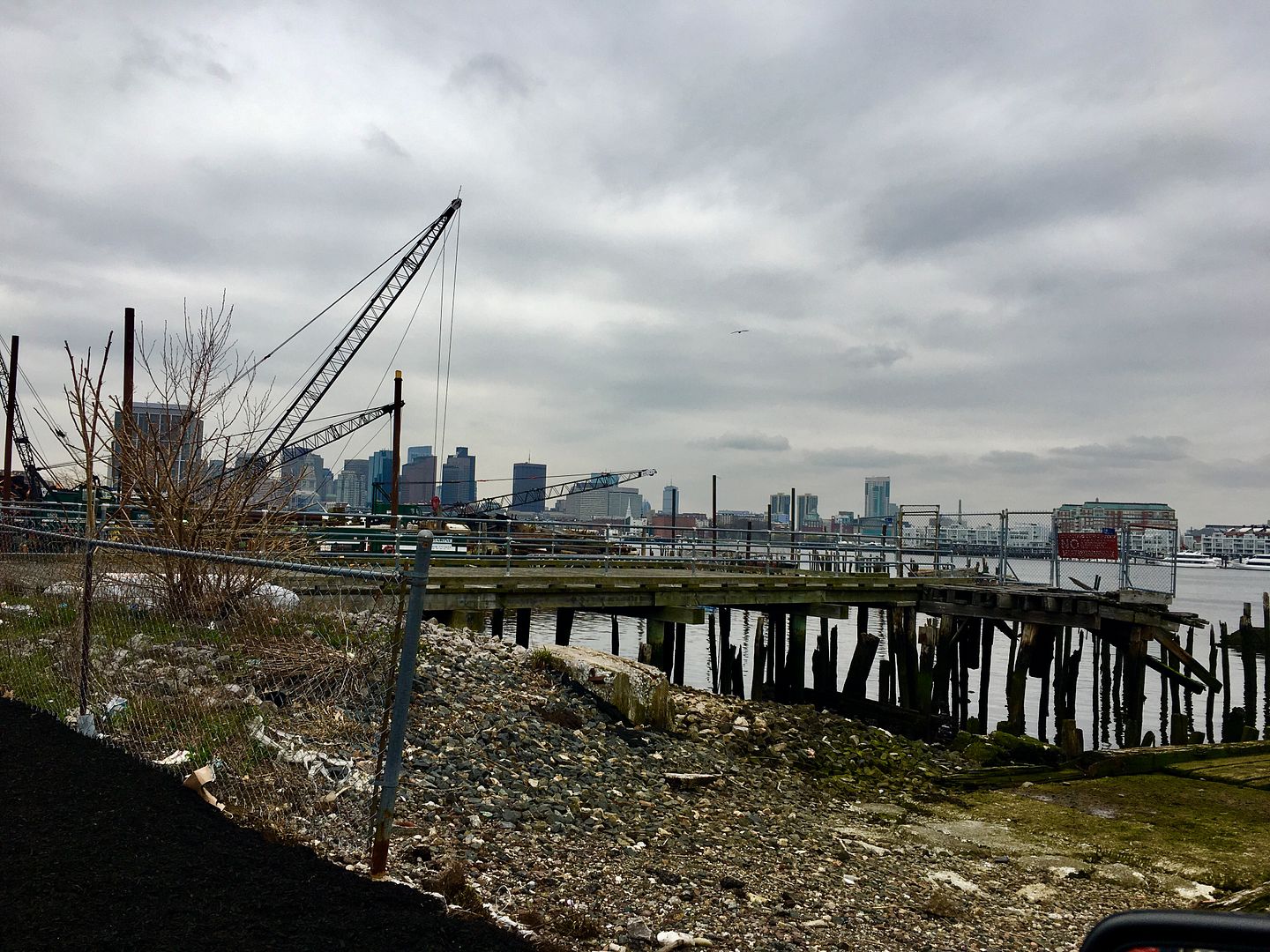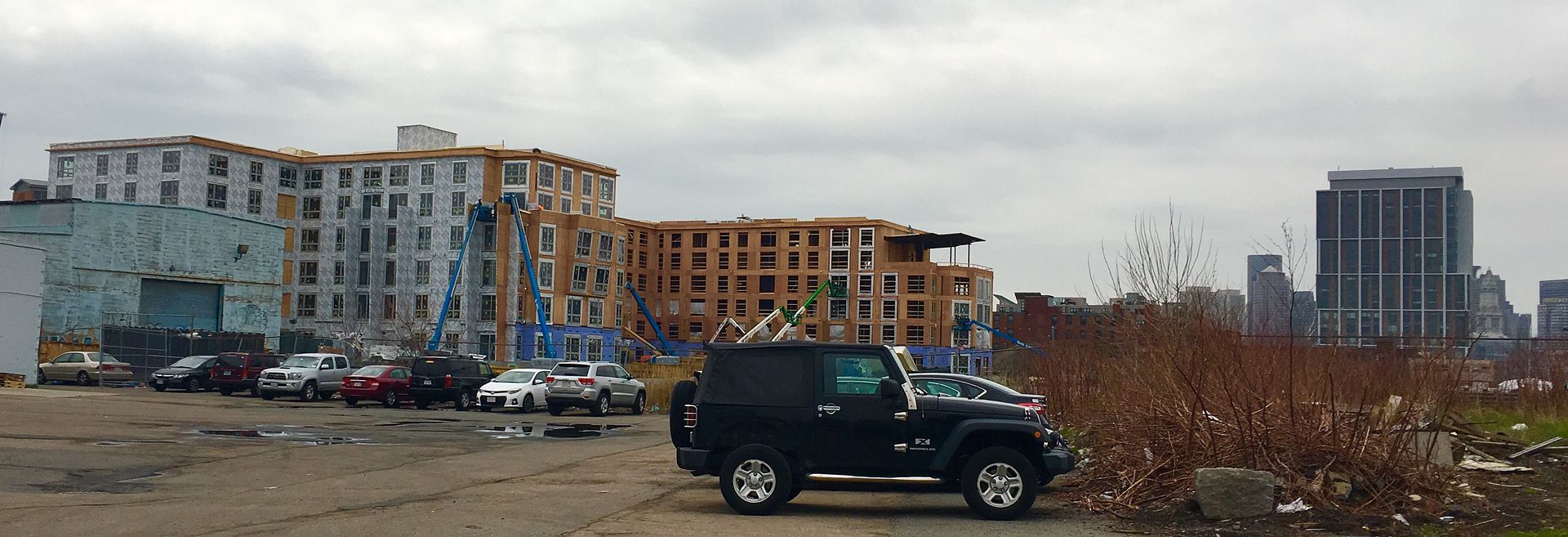You are using an out of date browser. It may not display this or other websites correctly.
You should upgrade or use an alternative browser.
You should upgrade or use an alternative browser.
East Boston Infill and Small Developments
- Thread starter BeeLine
- Start date
JeffDowntown
Senior Member
- Joined
- May 28, 2007
- Messages
- 4,798
- Reaction score
- 3,666
Yes cost is the issue... Although somehow not too long ago the economics used to make sense to build higher quality buildings that middle income people could afford to live in.
I think you have to rewind the clock pretty far back -- pre-WWII, in my opinion.
JumboBuc
Senior Member
- Joined
- Jun 26, 2013
- Messages
- 2,661
- Reaction score
- 1,559
Yes cost is the issue... Although somehow not too long ago the economics used to make sense to build higher quality buildings that middle income people could afford to live in.
Land used to be much cheaper. And as CCA said, contemporary performance requirements make building more expensive.
"High quality" buildings are much more affordable to make when you don't have to worry about things like ADA accessibility and fire egress requirements and regulated dimensional standards and minimum parking requirements and regulated setbacks and FARs and etc. Also, labor used to be much cheaper.
The far majority (practically all) of the housing stock in Boston/Cambridge/Somerville/etc. could not be legally built today in its current form. This adds significantly to the costs of new construction.
cca
Senior Member
- Joined
- Aug 19, 2008
- Messages
- 1,408
- Reaction score
- 12
I think you have to rewind the clock pretty far back -- pre-WWII, in my opinion.
Professionally ... I agree with Jeff. We (designers/builders) have been fighting the desire for nostalgia and the requirements of high performance buildings for many decades.
By the way tangent, most buildings are built to last (physically) ... for a good long time, but what seems to be taking us most away from the building types you seem to be referring to is that we now have much better understanding of how much you need to do to make a building last for the duration that the owner wants.
In 1890, when one built a building ... you built a 24" load bearing brick wall with wood beam floors because that is what we KNEW would work. That building probably was used as designed for 50 years, than ... because it was so over designed, it was able to be reused as something else. These are the buildings we point at and say "now that was quality!"
Today, a client does not want to put any more resources than what will cover its intended use (neither did the ones in the past either), but now we would never build a 24' wall, it is over structured, always was. Often "intended use" is tied to ROI. Once someone gets their return, the building get sold, however, the building was likely built to last without serious renovation to coincide with the ROI. The second owner than gets to deal with the maintenance issues that come with a building built in this way. Buyer beware.
The way the building looks also connects to this. Owners who plan to divest the property in the short/medium term are more likely to use cheap and trendy materials (think alucobond) to get the initial interest in the project without much interest in how the building will last into the future, or be part of the larger city fabric.
This ... is ... a ... shame.
But hey ... you can make lots of money this way. So ... there is that.
cca
commuter guy
Active Member
- Joined
- Feb 1, 2007
- Messages
- 894
- Reaction score
- 130
^ I always appreciate insight from those more knowledgeable in design and construction than myself. Maybe the economic reality of modern era construction is a reason that municipalities should play a more active role in regard to urban design outcomes, e.g., more design review or changes to zoning code to incentivize good design outcomes even if it is more expensive.
- Joined
- Jan 7, 2012
- Messages
- 14,072
- Reaction score
- 22,813
Demolition completed, site prep has begun.

Replaces a single story garage.
 31-Orleans-Street-Residential-Apartment-Development-Jeffries-Point-East-Boston-Waterfront
31-Orleans-Street-Residential-Apartment-Development-Jeffries-Point-East-Boston-Waterfront

Replaces a single story garage.
 31-Orleans-Street-Residential-Apartment-Development-Jeffries-Point-East-Boston-Waterfront
31-Orleans-Street-Residential-Apartment-Development-Jeffries-Point-East-Boston-Waterfront- Joined
- Jan 7, 2012
- Messages
- 14,072
- Reaction score
- 22,813
Demolition work continues at Coppersmith Village site.
 https://flic.kr/p/TdeJa5
https://flic.kr/p/TdeJa5
 https://flic.kr/p/SysNYZ
https://flic.kr/p/SysNYZ
 https://flic.kr/p/TdeJa5
https://flic.kr/p/TdeJa5 https://flic.kr/p/SysNYZ
https://flic.kr/p/SysNYZ- Joined
- Jan 7, 2012
- Messages
- 14,072
- Reaction score
- 22,813
- Joined
- Jan 7, 2012
- Messages
- 14,072
- Reaction score
- 22,813
- Joined
- Jan 7, 2012
- Messages
- 14,072
- Reaction score
- 22,813
- Joined
- Jan 7, 2012
- Messages
- 14,072
- Reaction score
- 22,813
Brad Plaid
Senior Member
- Joined
- Jan 17, 2013
- Messages
- 1,310
- Reaction score
- 1,559
The two on the left are quite nice.
This could be pretty good too, already better than the soul-crushing vinyl things on either side.
- Joined
- Jan 7, 2012
- Messages
- 14,072
- Reaction score
- 22,813
atlantaden
Senior Member
- Joined
- May 31, 2006
- Messages
- 2,606
- Reaction score
- 2,750
Boston02124
Senior Member
- Joined
- Sep 6, 2007
- Messages
- 6,893
- Reaction score
- 6,639
- Joined
- Jan 7, 2012
- Messages
- 14,072
- Reaction score
- 22,813
- Joined
- Jan 7, 2012
- Messages
- 14,072
- Reaction score
- 22,813
- Joined
- Jan 7, 2012
- Messages
- 14,072
- Reaction score
- 22,813
- Joined
- Jan 7, 2012
- Messages
- 14,072
- Reaction score
- 22,813






































